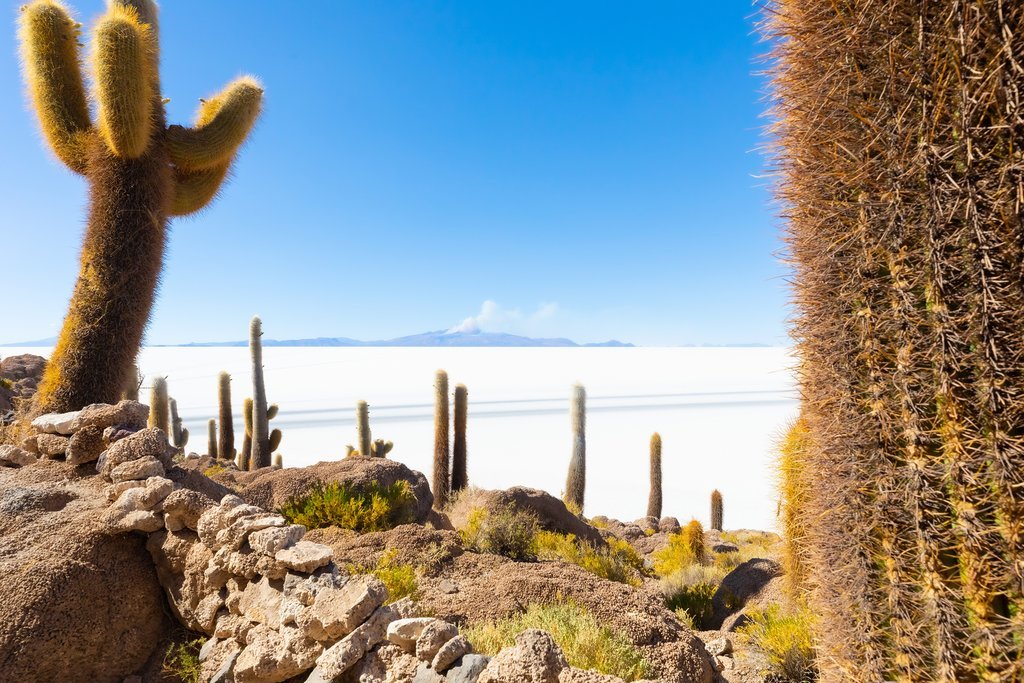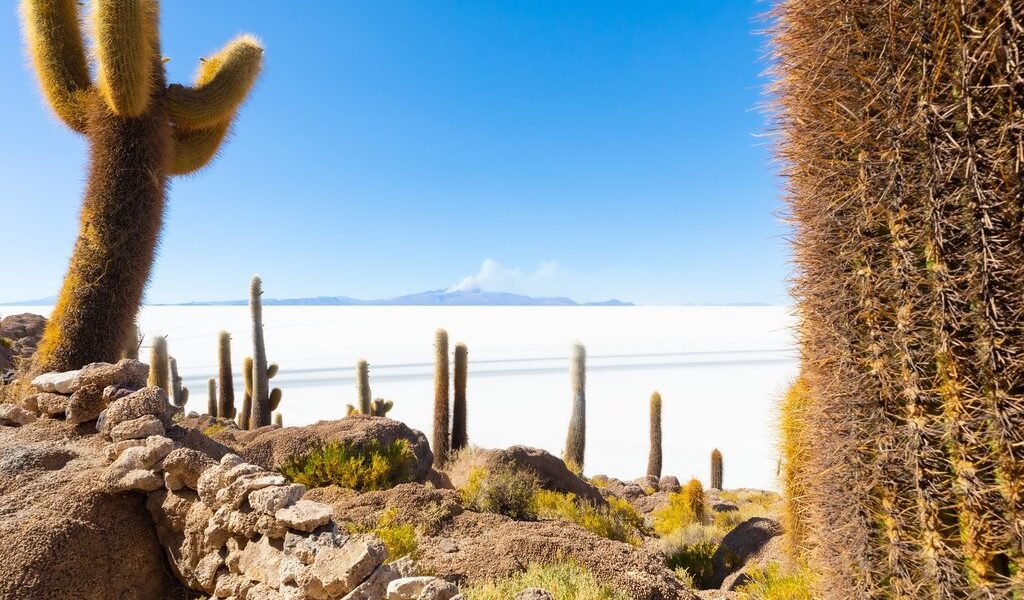
One of the driest, brightest months of the year, June ushers in the start of peak season. But with the biggest crowds still yet to arrive, this is a terrific time for snapping up the few remaining deals on tours and accommodation. Cooler temperatures everywhere, from the Andes to the Amazon, also mean this is an excellent month for outdoor pursuits, but you’ll want to pack layers for the chilly nights. The country celebrates some memorable festivals now, too, such as the winter solstice celebrations at Tiwanaku.
Bolivia, a land of staggering contrasts and breathtaking beauty nestled in the heart of South America, offers a diverse range of climates and geographical wonders. Like many of its South American neighbors, Bolivia is divided into distinct zones, each boasting its own unique weather patterns and characteristics. From the towering, snow-capped Andes Mountains in the west to the steamy, verdant rainforests in the north, and the expansive, semi-arid savannas in the south and east, Bolivia presents a kaleidoscope of experiences for the intrepid traveler. The savanna region, largely covered by the Gran Chaco, is predominantly semi-arid with sparse tree cover, creating a unique and challenging landscape.
Andes
The Andean region of Bolivia, with its high-altitude plateaus and dramatic peaks, shares climatic similarities with the Andean region of Peru. The city of **La Paz**, situated on a plateau in the foothills of the Andes, serves as an excellent indicator of the weather conditions prevalent throughout the region. The city’s considerable elevation ensures pleasantly cool days, perfect for exploring its vibrant streets and surrounding landscapes. Maximum temperatures in **La Paz** typically hover around 54°F (12°C), providing a refreshing escape from warmer climates. However, the high altitude also brings sub-zero nights, requiring warm layers to combat the chilling temperatures that can dip to around 28°F (-2°C). Despite the cold, the days are often gloriously bright, bathed in a crisp light that is ideal for photography, particularly after the morning mists have dissipated. As you venture higher into the Andes, the temperature drops further. At locations such as **Lake Titicaca** and the awe-inspiring **Salar de Uyuni**, nighttime temperatures can plummet as low as 21°F (-6°C), so packing appropriate clothing is essential for a comfortable and enjoyable experience. The sheer scale and beauty of the **Salar de Uyuni** is a sight to behold.
Rainforest
Located on the border with Brazil in the north of Bolivia, **Cobija** provides a reliable reference point for understanding the weather in the rainforest region. June is an exceptional time to explore the Bolivian Amazon, as it offers a welcome respite from the heavier rains of other months. With an average of only four days of rain, the drier conditions make it considerably easier to spot the region’s diverse wildlife. This is a critical consideration for those hoping to witness the unique fauna of the Amazon. Another advantage of visiting in June is the temperature. The heat is more bearable due to lower humidity levels and slightly reduced temperatures. Expect daytime highs of around 86°F (30°C) and nighttime lows of 63°F (17°C), making for more comfortable exploring than in the sweltering summer months. The rainforest is a truly unique environment.
Savanna
The city of **Santa Cruz** offers a representative view of the weather patterns in Bolivia’s savanna region. Visiting in June allows you to enjoy predominantly bright and pleasantly warm temperatures, which are conducive to exploring the region’s attractions. Average daytime highs in **Santa Cruz** reach a comfortable 73°F (23°C), while nighttime lows settle around 59°F (15°C). The sun typically shines for approximately seven hours each day, providing ample opportunities for outdoor activities and sightseeing. Rainfall is less frequent in June (around seven days) compared to the summer months, although it is always wise to be prepared for the occasional shower. The savanna is an important part of Bolivia’s ecosystem.
Crowds & Costs
June is widely considered one of the most favorable months to explore the wonders of Bolivia. The reliable weather conditions make it ideal for outdoor activities across the vast majority of the country. While the tourist season is beginning to pick up due to the dry, bright, and warm weather, the peak crowds of July and August have yet to arrive. This means that you may still be able to find good deals on tours and accommodations, providing a more budget-friendly travel experience. However, it is important to note that rooms can become scarce, and prices tend to increase significantly during festival times, particularly during the nationwide fiesta for San Juan, which takes place on June 24th. Plan accordingly.
Where to Go
Andes
There is arguably no better month than June to venture into the majestic Andes Mountains. The clear skies and abundant sunshine showcase these incredible mountains in all their glory. If you are using **La Paz** as your base for exploration, be sure to allocate a day or two to immerse yourself in the city’s burgeoning food scene, captivating museums and galleries, and vibrant, colorful markets. The markets are a true cultural experience.
The San Juan festivities, celebrated on June 24th, offer a unique cultural experience filled with plenty of partying. The first rays of sunlight at the winter solstice bring fascinating indigenous celebrations to the Pre-Columbian ruins of **Tiwanaku**, located near **Lake Titicaca**. June is also an excellent time to tour the dazzlingly white and surreally beautiful **Salar de Uyuni**, the world’s largest salt flats. Remember to pack layers of clothing to stay warm during the crisp, starry nights, when temperatures regularly drop below freezing. The **Salar de Uyuni** is one of the most unique places on earth.
Rainforest
If your primary goal is to observe the diverse wildlife of the Amazon, June is an excellent month to visit. With the rains subsiding, the Amazon becomes far more accessible. The slightly cooler (less humid) weather and drier days make it an appealing time to embark on a boat trip along the **Río Beni** or **Río Mamoré**. As the peak season is just starting to gain momentum, June typically sees fewer crowds compared to July and August, increasing your chances of securing a good deal on a tour. **Rurrenabaque** is a relaxed and charming gateway to the jungle, while the colonial city of **Trinidad** offers a more urban experience with its big-city appeal. **Rurrenabaque** is a great place to begin your adventure.
Savanna
The plains and lowlands of Bolivia enjoy largely dry, warm, and sunny days in June. **Santa Cruz** is a characterful city that provides a great cultural fix, with its rich colonial heritage and bustling, music-filled street life. Located northeast of **Santa Cruz** is **Chiquitania**, home to the UNESCO World Heritage Jesuit missions. Traveling south instead will lead you to **Valle de la Concepción**, near the border with Argentina, where vineyards thrive at some of the world’s highest altitudes. The surrounding hills also offer excellent hiking opportunities to discover hidden Inca sites.
What to Do
Rainforest
June stands out as one of the best months to visit the Bolivian Amazon. The dry weather enhances wildlife spotting opportunities, and the marginally cooler temperatures make exploring more comfortable. While visitor numbers are gradually increasing as the peak season approaches, you can still avoid the larger crowds and take advantage of good deals on accommodations and tours.
The relaxed town of **Rurrenabaque** serves as the primary gateway to the rainforest and pampas, offering boat trips on the **Río Beni**. During these boat trips, keep an eye out for macaws, capybaras, piranhas, and even pink dolphins. A short journey west from **Rurrenabaque** will bring you to the unmissable and extraordinarily biodiverse **Madidi National Park**, which represents one of the world’s most unique ecosystems, stretching from the sultry rainforest to the Andean peaks. Alternatively, you can access the rainforest from the tropical city of **Trinidad**, characterized by its colonial architecture and charming colonnades.
Andes
The wide-open blue skies and crisp, cool days of June are perfect for outdoor pursuits such as hiking and mountain biking in the Andes. Before venturing into the heights, consider spending a day or two in **La Paz** to visit some of its notable museums, such as the **Ethnography Museum** and the **Plaza Museum of Contemporary Art**. You can also explore the city’s vibrant markets and street life, and indulge in its ever-evolving and increasingly exciting food scene.
For a thrilling experience, you can test your nerve (and your brakes!) by downhill biking on one of the world’s most dangerous roads through the forest-cloaked mountains of the **Yungas** to **Coroico**, if you dare. **Lake Titicaca** is exceptionally beautiful at this time of year. Base yourself in **Copacabana** and take day trips to the pre-Hispanic ruins of **Tiwanaku** and the enchanting **Isla del Sol**. The vast and magnificent salt flats of the **Salar de Uyuni** are at their most accessible now that the rains have subsided.
Savanna
**Santa Cruz** is a delightful destination for those seeking a cultural experience, offering colonial architecture and colonnades, sacred and contemporary art museums, vibrant street life, and beautiful botanical gardens. From the relaxed little town of **Vallegrande**, you can hike in the Andean foothills and explore the trail of Che Guevara’s last days. By staying in **Tarija**, you can easily venture out into the high-altitude vineyards of **Valle de la Concepción**, stopping along the way for wine tastings.
Events in June
**Santísima Trinidad** (**Festival of the Holy Trinity**), **Trinidad**. This major fiesta takes place on a different date in June each year. The city of **Trinidad** celebrates with great enthusiasm, featuring flamboyantly costumed parades, bullfights, and general merrymaking.
**Corpus Christi**, **Potosí**. This Christian feast, celebrated in mid-June, is embraced with particular zeal in the mining town of **Potosí**, featuring mass and vibrant street processions.
**San Juan**, nationwide. Celebrated across the entire country on June 24th, one of the coldest days of the year, the feast day of St John is marked with bonfires, fireworks, and extensive partying. The biggest fiesta takes place in **Santa Cruz**, while the nearby village of Porongo is renowned for its firewalkers.
**Winter equinox**, **Tiwanaku**. On June 21st, the winter solstice brings indigenous leaders to the ancient ruins of **Tiwanaku** on the shores of **Lake Titicaca** to celebrate the return of the new sun.
B-182

